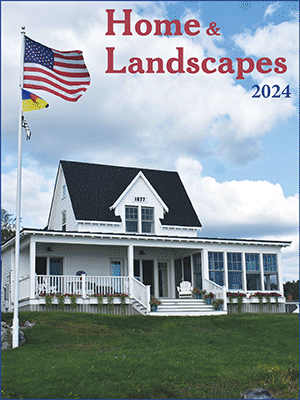Snowy Storm in the Marsh
 During a drive back from Port Clyde, the authors spied a “snowy storm” of dozens of snowy egrets and other birds in Weskeag Marsh in South Thomaston. Such a vision is a rare treat in Maine, more reminiscent of places like Florida. Courtesy of Jeff Wells
During a drive back from Port Clyde, the authors spied a “snowy storm” of dozens of snowy egrets and other birds in Weskeag Marsh in South Thomaston. Such a vision is a rare treat in Maine, more reminiscent of places like Florida. Courtesy of Jeff Wells
 Beautiful Weskeag Marsh in South Thomaston in the setting sun. Courtesy of Jeff Wells
Beautiful Weskeag Marsh in South Thomaston in the setting sun. Courtesy of Jeff Wells
 During a drive back from Port Clyde, the authors spied a “snowy storm” of dozens of snowy egrets and other birds in Weskeag Marsh in South Thomaston. Such a vision is a rare treat in Maine, more reminiscent of places like Florida. Courtesy of Jeff Wells
During a drive back from Port Clyde, the authors spied a “snowy storm” of dozens of snowy egrets and other birds in Weskeag Marsh in South Thomaston. Such a vision is a rare treat in Maine, more reminiscent of places like Florida. Courtesy of Jeff Wells
 Beautiful Weskeag Marsh in South Thomaston in the setting sun. Courtesy of Jeff Wells
Beautiful Weskeag Marsh in South Thomaston in the setting sun. Courtesy of Jeff Wells
Another gorgeous September weekend day here in Maine and we were drawn to a peninsula that we haven’t visited much in recent years. We headed over to Thomaston and then drove south past the big white Knox Museum, then the Finnish Church where decades ago we saw a snowy owl perched atop one cold winter day.
We drove through Tenants Harbor where noted ornithologist Ralph Palmer (author of the classic 1949 “Maine Birds” book) retired to in his later years, followed the sharp left-hand curve, and made out way to the end of the road in Port Clyde. For years we used to take the Monhegan Boat Lines ferry from here every spring and fall (and some winters, too) out to Monhegan Island. The harbor is rebounding and rebuilding from last year’s devastating fire. Businesses were open and busy, and lots of visitors were out and about.
We found our way over to the Marshall Point Lighthouse and Museum, which is located at the literal end of the peninsula and the east-facing entrance to the harbor of Port Clyde. We gazed out over Allen Island (now owned by Colby College) to see the cliffs on the north end of Monhegan. Birds were a little quiet here, but we didn’t mind. A light breeze coming off the ocean made it pleasantly cool, and we were surrounded by the smell of spruce trees and fall flowers. A bald eagle floated overhead in the blue sky, scaring hundreds of gulls into the air.
Heading back up the peninsula, we decided to stop off at the famed Weskeag Marsh in South Thomaston. This tidal saltmarsh is just south of the big concrete plant on Route 1 and has become a well-known birding hotspot that has attracted various rare birds over the years. Driving up Buttermilk Lane to the parking and viewing area we realized that the tide was very low—usually not so good for finding birds in a tidal marsh as they are spread out over a large area and often out of view.
As we passed over a small bridge crossing tiny Marsh Brook, we glanced to the right toward the upper reaches of the marsh and were stunned. Wha we saw was like a scene more reminiscent of Florida than coastal Maine. Packed into a small series of shallow pools was a “snowbank” of white. Seventy snowy egrets danced among more than a dozen taller great egrets. A few great blue herons, looking like giants, were scattered among them.
More birds were scattered about the feet of the egrets and herons. Lesser and greater yellowlegs, short-billed dowitchers, and even a single stilt sandpiper probed and picked and fluttered. It was a glimpse of the unexpected, something that we don’t get to see every day here in Maine.
As we stood watching and counting with our binoculars and scope, cars slowed down to see what we were seeing. We hope they enjoyed the snowy storm in the marsh as much as we did!
Jeffrey V. Wells, Ph.D., is a Fellow of the Cornell Lab of Ornithology and Vice President of Boreal Conservation for National Audubon. Dr. Wells is one of the nation's leading bird experts and conservation biologists. He is a coauthor of the seminal “Birds of Maine” book and author of the “Birder’s Conservation Handbook.” His grandfather, the late John Chase, was a columnist for the Boothbay Register for many years. Allison Childs Wells, formerly of the Cornell Lab of Ornithology, is a senior director at the Natural Resources Council of Maine, a nonprofit membership organization working statewide to protect the nature of Maine. Both are widely published natural history writers and are the authors of the popular books, “Maine’s Favorite Birds” (Tilbury House) and “Birds of Aruba, Bonaire, and Curaçao: A Site and Field Guide,” (Cornell University Press).
























